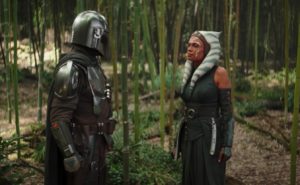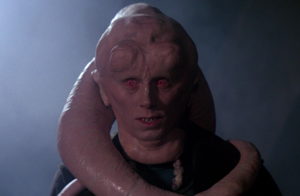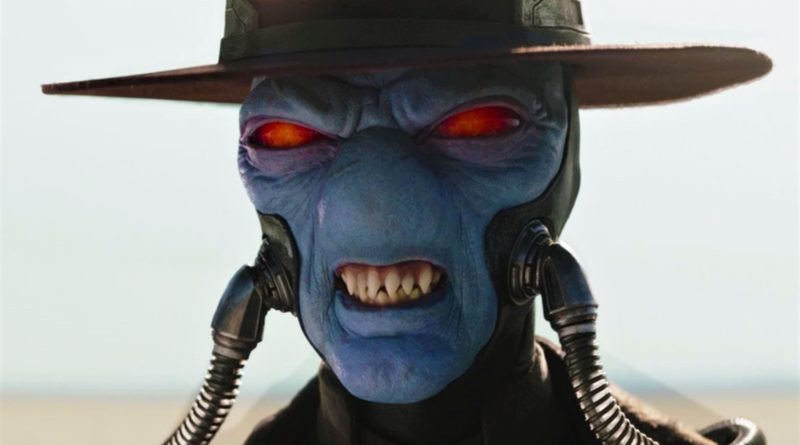Fan Service: How much is too much?
In late February, the Disney+ series The Book of Boba Fett (abbrev. TBBF) aired its first season finale. The finale was received fairly well; at the very least, it was received more positively than the previous two episodes. But polarization between critics and fans has been plaguing this 7-episode series since its beginning. The driving force behind this polarization? Fan service (or lack thereof, depending on who you ask). Whether the showrunners intended to or not, TBBF sparked a conversation online about what role fan service should play in new content being pushed out from our favorite pop culture franchises. The franchise in this instance being Star Wars.
Disclaimer: I am a massive Star Wars fan. This franchise has fueled my imagination since before I could walk, and it holds a monumentally large soft spot in my heart. I’ve seen each Star Wars film at least a dozen times over, I’ve read oodles of ancillary source material for fun, and I even have a Star Wars-themed tattoo on my shoulder. If you want to talk about obsessive fans of this franchise, then you should absolutely count me in. But one of the reasons why I love this space opera series so much is because of the many fascinating ideas and themes that I can unearth when I look at the material as critically as possible. This is why, when it comes to taking in TBBF as a narrative, I find myself conflicted. And the broader conversation about fan service plays no small part in these lukewarm feelings.

“Fan service” generally means “material in a work of fiction or in a fictional series that is intentionally added to please the audience,” according to the term’s Wikipedia page and the 2009 article it sourced its definition from. Put into less-vague words, fan service is when a piece of fiction deliberately throws something onto the page or screen that the creator knows for certain will excite the audience. This normally looks like fan-favorite characters coming back to the story, gratuitous interactions between characters to titillate fan speculation, or when a heavy dose of nostalgia is inserted into the narrative. Living in the age of reboots and sequels as we do, it’s not uncommon for the latest entry in a popular franchise to sprinkle in references or call-backs to earlier, more “classic” elements of the franchise.
“Fan service” also tends to carry a negative connotation in modern conversations on the topic. Bringing this back to the show at hand, there was concern among fans and critics alike that TBBF relied too much on fan service to carry out the narrative, leaving not enough room to tell an interesting or compelling story on its own. This criticism was especially levied towards the final three episodes of the merely-seven episode season. Chapter Five focused primarily on Din Djarin, the protagonist of the only other live-action Star Wars show — The Mandalorian. It followed him as he dealt with the aftermath of his own show’s season two finale, meeting several characters from The Mandalorian along the way. Boba Fett — the titular character of this series — was not in a single frame of this episode. Boba does show up in the next episode, albeit for a single scene. Chapter Six, “From The Desert Comes A Stranger”, spends the majority of its run time on Din again. But this time he’s joined by a returning Grogu (“Baby Yoda”), Ahsoka Tano, and Luke Skywalker. By the episode’s end, a character from previous Star Wars animated shows — Cad Bane — makes his live-action debut. Beloved, fan-favorite characters dominated the screen for the two episodes in a row, but what about our main character?
These appearances weren’t entirely throw-away — Grogu, Din, and Bane all play important roles in the finale episode — but the detours that were taken to set everything into place were overbearing. Why interrupt a narrative focusing on Boba Fett to show the audience how Luke Skywalker is training Grogu? Why include Ahsoka too? These are characters with rich histories in the franchise, but they feel entirely out of place here. The only “fan-servicey” character who fit well the show’s narrative was Cad Bane, as his history with Boba lays an interesting groundwork for conflict between the two. But because of all the previous detours, he and Boba only get to interact twice before the season ends! The result was scatterbrained storytelling.

I’m of the opinion that, when a creator is tasked with contributing to a long-running and beloved IP, it’s almost impossible for the creator’s own giddiness or personal history with the franchise to not leak through onto the final project. Making a few little nods to classic elements of the text is expected, but there comes a point where the call-backs and the references become tiresome. Unless it’s handed out in small doses, fan service can turn people off from something instead of keeping them coming back for more. But where is the line? What divides a “good” amount of fan service from the overwrought burden of excessive fan service?
From my perspective, the most productive way to approach this question is to look at how this element of “fan service” is being incorporated into the text. An example of fan service being used effectively would be the reappearance of Bib Fortuna in the post-credits sequence of The Mandalorian season two finale. Fortuna, a henchman of crime lord Jabba the Hutt, shows up sitting on his old boss’s throne, before Boba Fett promptly shoots him dead. Bib Fortuna is one of many bit-characters in Star Wars who fans have latched on to despite his mere 3 minutes of screen time in the films. Having Fortuna briefly rear his tentacled head again, before being immediately killed, presented viewers with some visual continuity between the modern show and a film that was released 36 years ago, while not distracting from the main story in any way. Of course Bib would take his old boss’s place as head crime lord, and of course Boba would dispatch him so easily. Beyond the fun of seeing Bib Fortuna again, his presence also served as connective tissue in the story. This was fan service done in a productive and non-gratuitous way.


Specifically within TBBF, putting Ahsoka Tano, Luke Skywalker, Cad Bane, and even Din Djarin on-screen could all be considered fan service — each of these characters is very likely to produce a positive reaction from viewers because each have been well-received in previous shows or properties. But for many viewers, that positive reaction was dulled with every new returning character who walked onto screen. Why? I think because most viewers immediately felt distracted by all of these random interruptions to the show’s main story. Emotional investment into a narrative can be a tricky thing to cultivate, because it takes time and a steady pace to develop. When the audience had only just sunk their teeth into Boba’s story, suddenly they were expected to take a trip through various cameos with only loose connections to the main plot thread.
As a massive Star Wars fan, I want more from these stories. I want these characters that I love so much to actually be portrayed with the nuance and gravitas that made them memorable in the first place. Storytelling potential is lost when fan service is done merely for the sake of a titillating moment for fans to buzz about online. If a character comes back, in the middle of a new narrative, give the audience a reason to care about it beyond the character’s reputation. Remind us why we love these characters, and why we should be excited about their role in a new story. Reducing these characters to a rotating gallery of guests does both the fans and the show a great disservice.

